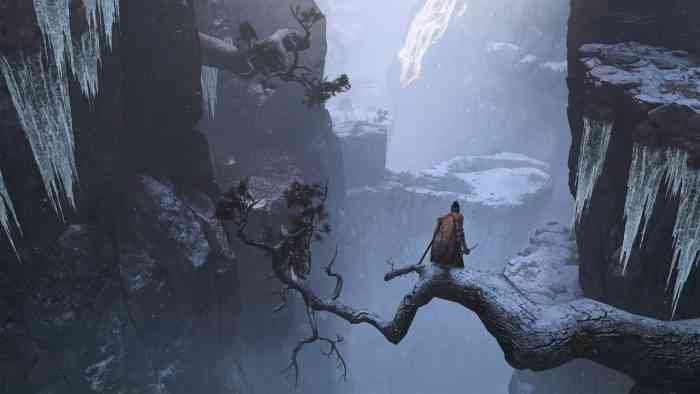Shadows Die Differently
Diving into 2019, we can expect many more details about Sekiro: Shadows Die Twice and how it differs from the rest of the Soulsborne series. It starts with new info for the month of January.

Today, we’ve learned a few details about Sekiro’s character progression, courtesy of GameInformer. This time around, currency and XP no longer function like the rest of the Soulsborne series. Instead, players will earn money as they explore the world and cut down enemies. For every beastie and brawler, players will also gain experience for skill points. Those skill points can be spent toward, you guessed it, skill trees that offer different playstyles.
There are a few factors to consider when spending skill points, as well as caveats. Skill trees can only be unlocked by finding specific items in the world. But once you’ve found the proper item, you can invest skill points at a rest area known as the Sculptor’s Idol (Sekiro’s version of a bonfire). Of the skill trees revealed, we have shinobi Arts, Samurai Arts, and a tree dedicated to the prosthetic arm. Shinobi arts is about stealth gameplay and crowd control. Samurai, on the other hand, lets you assault opponents head-on. Alongside passive abilities and buffs, “combat arts”, as From Software mentioned, are moves that let you further customize playstyle.
Items you can find and equip to your prosthetic arm come in the form of shuriken launcher, an axe, a flame vent, and possibly more. To increase health and stamina, players can also find hidden prayer beads. There are many items and upgrades that let players diversify their moves and abilities, to be “more creative and find your preferred ninja style, so you’ll have to specialize and think [about] which path you want to take,” says Yasuhiro Kitao, marketing and communications manager at From Software. While death doesn’t cost progression like in previous From games, there are other detriments that director Miyazaki has yet to reveal. The focus with Sekiro: Shadows Die Twice is freedom with each combat encounter.
“This is actually using Miyazaki-san’s own words – You could think of the previous Souls games as more expanding laterally, and adding breadth to these various options and builds,” Kitao says. “While you are a fixed shinobi protagonist, you do feel like there’s a sense of progression, there’s a sense of building your own character and finding your own playstyle, and experimenting with this throughout the game.”
Sekiro: Shadows Die Twice is scheduled to launch for PC, PS4, and Xbox One later this year.